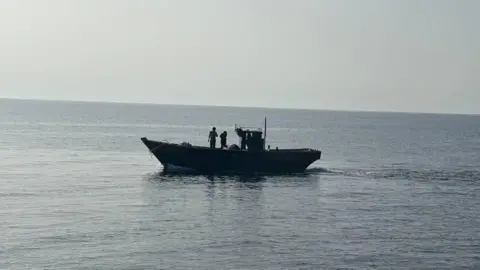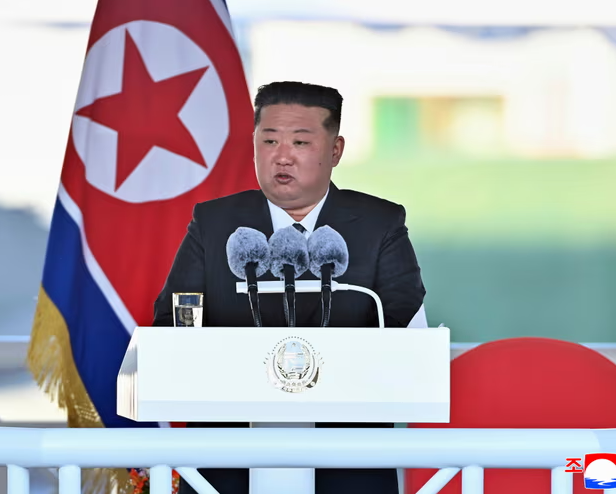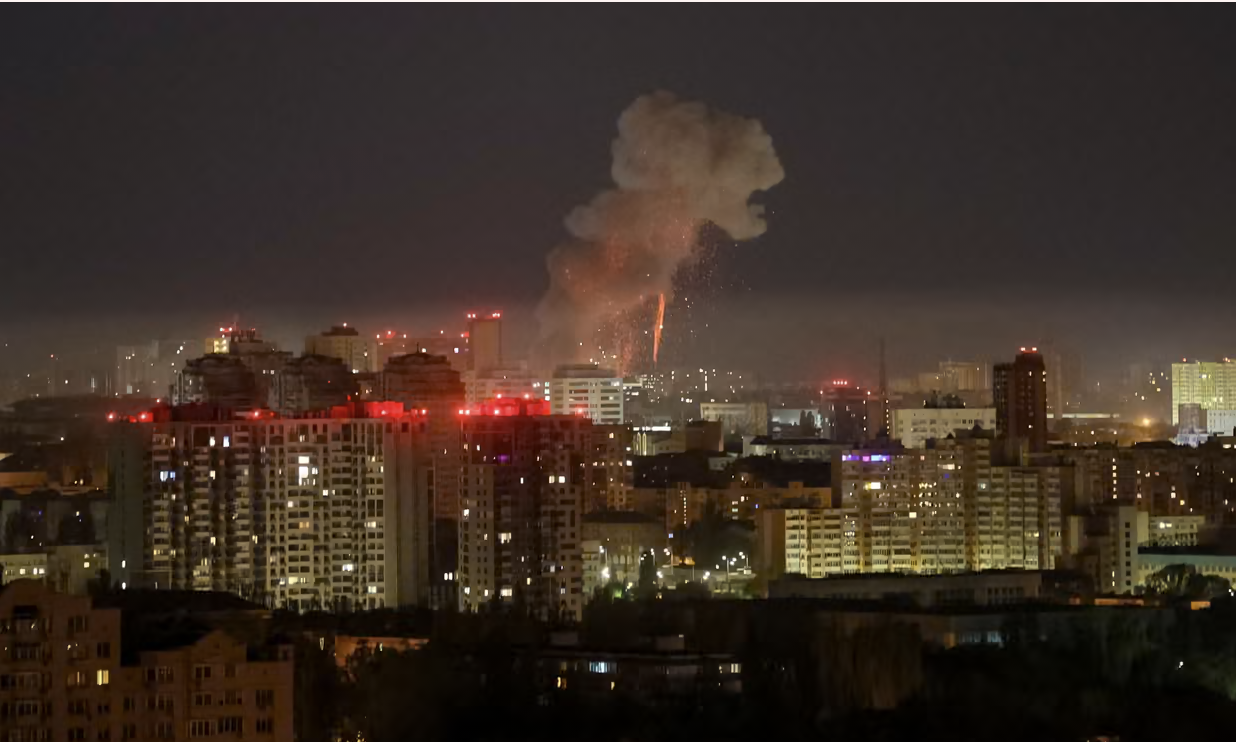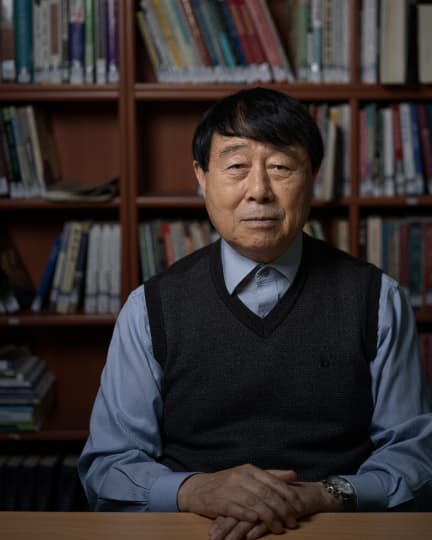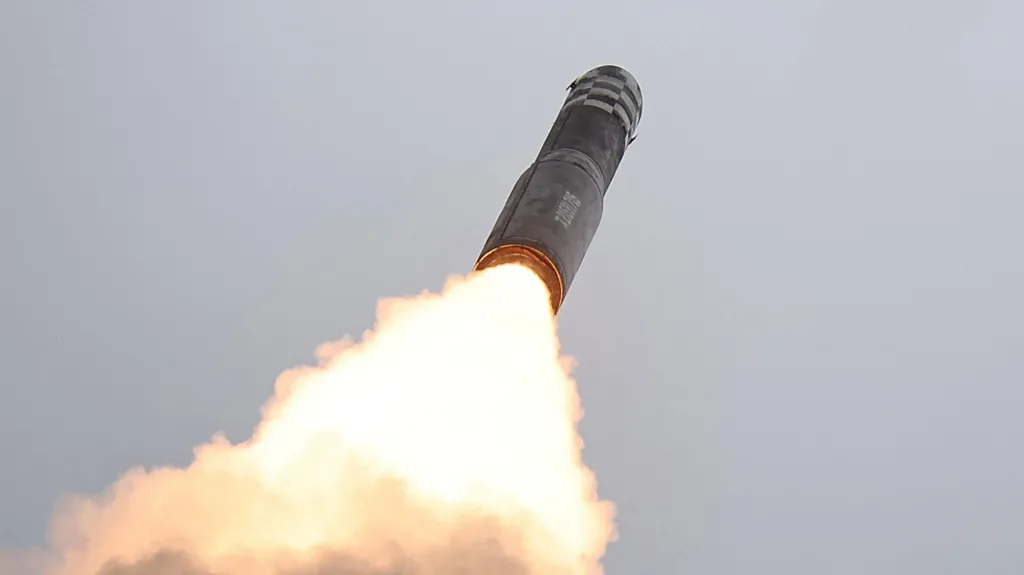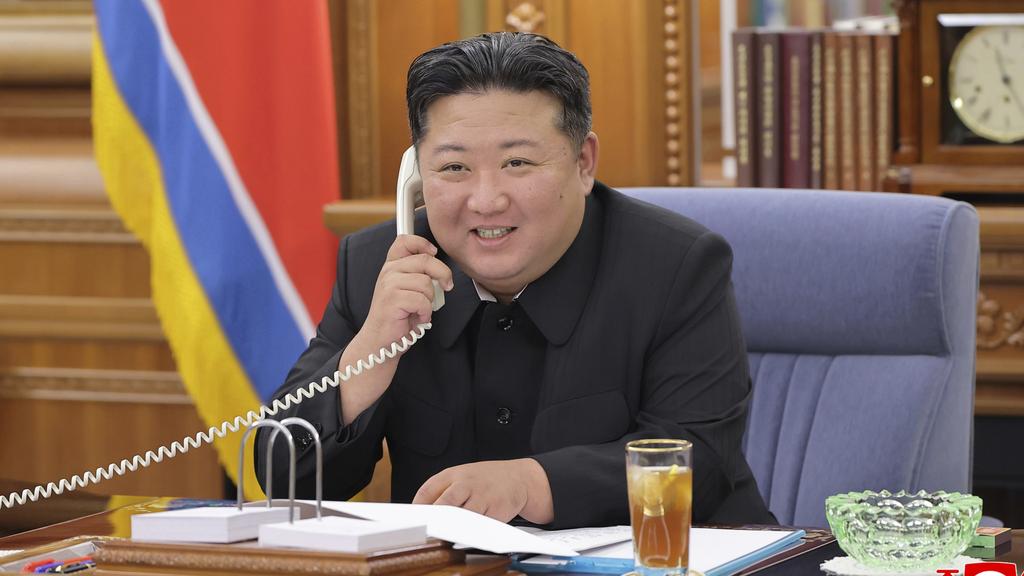
This article is more than
1 year oldNorth Korea’s fanatical regime just got scarier
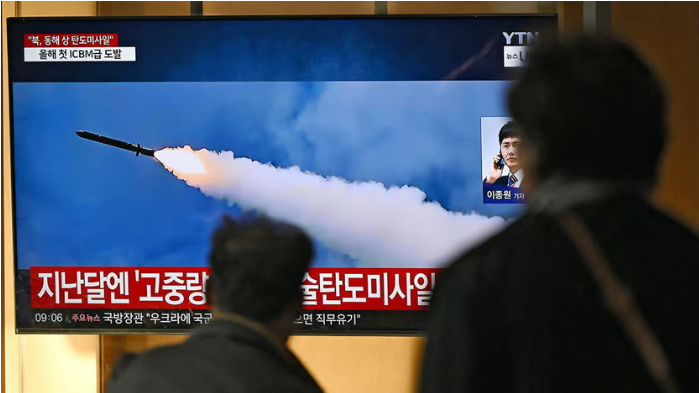
A new missile test, troops to Russia and death sentences for K-pop
THE KAESONG Industrial Complex in North Korea has long symbolised hopes for peace and unity on the Korean peninsula. Opened in 2004, it housed South Korean factories that employed North Korean workers. Joint production trudged along until 2016, when South Korea turned off the lights in response to advances in North Korea’s nuclear programme; subsequent attempts to restart the project faltered. This month Kim Jong Un, North Korea’s dictator, made clear that it has no future by blowing up the roads that connect Kaesong to the south.
The destruction of roads is just one sign of rising tensions on the Korean peninsula. North Korea has strengthened its ties with Russia, dispatching an estimated 11,000 troops to help Vladimir Putin wage war against Ukraine; South Korea fears that Mr Putin will provide sensitive missile or nuclear technology in return. On October 31st, North Korea tested an intercontinental ballistic missile for the first time in almost a year, which had its longest flight time yet. It may also conduct a nuclear test around America’s elections next week. Less visibly, but no less ominously, over the past year Mr Kim has reversed decades of official doctrine by declaring that the two Koreas are not a single divided people but rather separate, hostile states.
Yoon Suk Yeol, South Korea’s president, has laid out a hard-edged policy toward the North, too. Channels of communication have gone cold. Lower-level provocations have proliferated. South Korea resumed broadcasts of anti-communist propaganda targeted at North Korean soldiers along the border, while North Korea has sent balloons filled with rubbish into South Korea. All this suggests that the stand-off on the peninsula has entered a dangerous new phase.
The Korean war pitted neighbours against each other. Ryu Jae-sik, who hails from Gangwon, the southern half of a province split when the peninsula was divided, recalls capturing a soldier from the northern half of his home province: “I saw myself in him.” The fighting came to a halt in 1953, with the signing of an armistice and the creation of a demilitarised zone. Mr Ryu, like many at the time, imagined that the unresolved state of affairs would not last. The division endured far longer and the two societies diverged far further than expected. Yet throughout cycles of hostility and detente in recent decades, both governments’ stated aim was peacefully to reunify their divided lands and people, however unrealistic that seemed.
Mr Kim, in effect, has “come out and said the king is naked”, says Andrei Lankov of Kookmin University in Seoul. Breaking with the doctrines of his grandfather and father, Mr Kim declared peaceful reunification “impossible” and removed a monument to reunification that stands over a road to Pyongyang. He has ordered his armed forces to be prepared to “subjugate” the South (now a “belligerent state”) and called on his officials to “eliminate” bodies that work on inter-Korean relations. He no longer wants his people to see themselves in South Koreans: references to a shared Korean ethnicity have been stripped from propaganda songs and textbooks.
THE KAESONG Industrial Complex in North Korea has long symbolised hopes for peace and unity on the Korean peninsula. Opened in 2004, it housed South Korean factories that employed North Korean workers. Joint production trudged along until 2016, when South Korea turned off the lights in response to advances in North Korea’s nuclear programme; subsequent attempts to restart the project faltered. This month Kim Jong Un, North Korea’s dictator, made clear that it has no future by blowing up the roads that connect Kaesong to the south.
The destruction of roads is just one sign of rising tensions on the Korean peninsula. North Korea has strengthened its ties with Russia, dispatching an estimated 11,000 troops to help Vladimir Putin wage war against Ukraine; South Korea fears that Mr Putin will provide sensitive missile or nuclear technology in return. On October 31st, North Korea tested an intercontinental ballistic missile for the first time in almost a year, which had its longest flight time yet. It may also conduct a nuclear test around America’s elections next week. Less visibly, but no less ominously, over the past year Mr Kim has reversed decades of official doctrine by declaring that the two Koreas are not a single divided people but rather separate, hostile states.
Yoon Suk Yeol, South Korea’s president, has laid out a hard-edged policy toward the North, too. Channels of communication have gone cold. Lower-level provocations have proliferated. South Korea resumed broadcasts of anti-communist propaganda targeted at North Korean soldiers along the border, while North Korea has sent balloons filled with rubbish into South Korea. All this suggests that the stand-off on the peninsula has entered a dangerous new phase.
The Korean war pitted neighbours against each other. Ryu Jae-sik, who hails from Gangwon, the southern half of a province split when the peninsula was divided, recalls capturing a soldier from the northern half of his home province: “I saw myself in him.” The fighting came to a halt in 1953, with the signing of an armistice and the creation of a demilitarised zone. Mr Ryu, like many at the time, imagined that the unresolved state of affairs would not last. The division endured far longer and the two societies diverged far further than expected. Yet throughout cycles of hostility and detente in recent decades, both governments’ stated aim was peacefully to reunify their divided lands and people, however unrealistic that seemed.
Mr Kim, in effect, has “come out and said the king is naked”, says Andrei Lankov of Kookmin University in Seoul. Breaking with the doctrines of his grandfather and father, Mr Kim declared peaceful reunification “impossible” and removed a monument to reunification that stands over a road to Pyongyang. He has ordered his armed forces to be prepared to “subjugate” the South (now a “belligerent state”) and called on his officials to “eliminate” bodies that work on inter-Korean relations. He no longer wants his people to see themselves in South Koreans: references to a shared Korean ethnicity have been stripped from propaganda songs and textbooks.
One objective of Mr Kim’s new policy may be to help justify a crackdown on South Korean television shows and music. K-culture has spread widely in the North, and threatens to puncture the regime’s propaganda bubble. In recent years Mr Kim has passed ever-tougher laws criminalising the consumption of K-culture. Recent escapees recount cases of teenagers being given lengthy prison sentences for watching k-dramas; rights groups have documented numerous executions for distributing such cultural dope. If the illegal material is the handiwork of the same single Korean people, such brutality is hard to justify, even for Mr Kim. The new policy resolves that contradiction. Similarly, under the old doctrine a nuclear attack on South Korea amounted to friendly fire; now it would be a blow against the enemy.
External events have also contributed to Mr Kim’s hardening stance. Failed talks with Donald Trump in 2019 left him embittered and he soured on the idea of negotiating sanctions relief with America. (Though if Mr Trump returns to the White House, he may change his mind.) The pandemic in 2020 gave Mr Kim cover to isolate his country even further. Russia’s full-scale invasion of Ukraine in 2022 led Mr Putin to turn to Pyongyang for help. For North Korea, Russia emerged as “a great saviour” in a time of need, says Tae Yong Ho, a former high-level North Korean diplomat-turned-South Korean politician. Russia has provided Mr Kim with fuel, food, hard currency and, perhaps, advanced technology. South Korean officials think it has emboldened Mr Kim.

North Korea’s recent steps have prompted the South to reassess its own posture. Ever fewer South Koreans see themselves in North Koreans: with each passing generation, support for reunification fades (see chart). In a speech this August, Mr Yoon laid out a new policy of his own. While nominally still calling for unification, it makes explicit that it can happen only if the South absorbs the North. Even some South Korean progressives have downgraded their expectations. Lee Jong-seok, who served as minister of unification during the early years of the Kaesong complex’s work, sighs at the prospects of a unified peninsula. “Perhaps my descendants will see it,” he says. “The most important thing for now is not having war.”
Launching an all-out attack would be suicidal for Mr Kim. But he could escalate much further than destroying roads or testing missiles. On Yeonpyeong, a flashpoint island near the maritime border that North Korea shelled in 2010, one resident says they fear a repetition of the day “everything was ablaze”. Since that incident, the North’s military capabilities have grown. “Backed by a growing nuclear arsenal and support of Russia, Kim may feel more comfortable in taking chances,” writes Sydney Seiler, formerly America’s most senior intelligence officer for North Korea. Mr Yoon’s insistence that South Korea will respond to any provocations with force also increases the risk of tit-for-tat moves spiralling out of control. Imagining such a war is all too easy. Imagining lasting peace, by contrast, is becoming harder.
